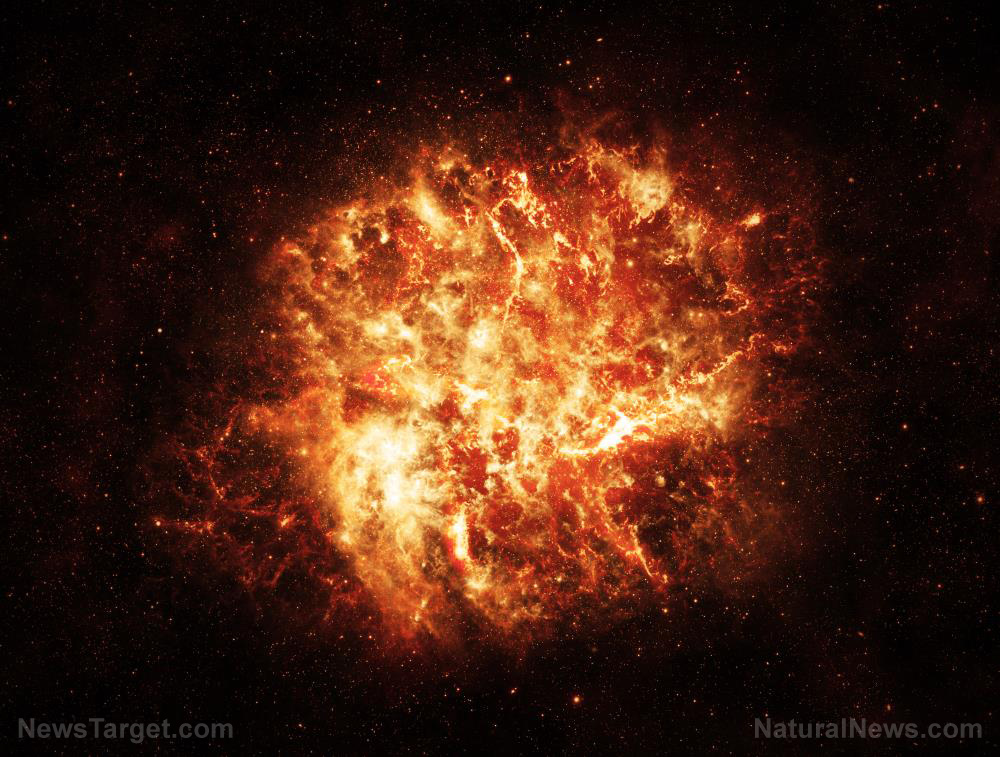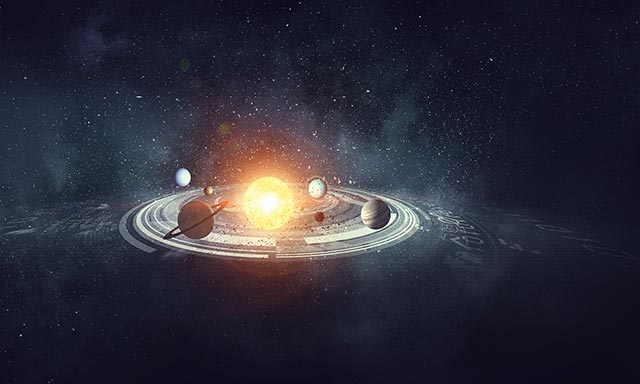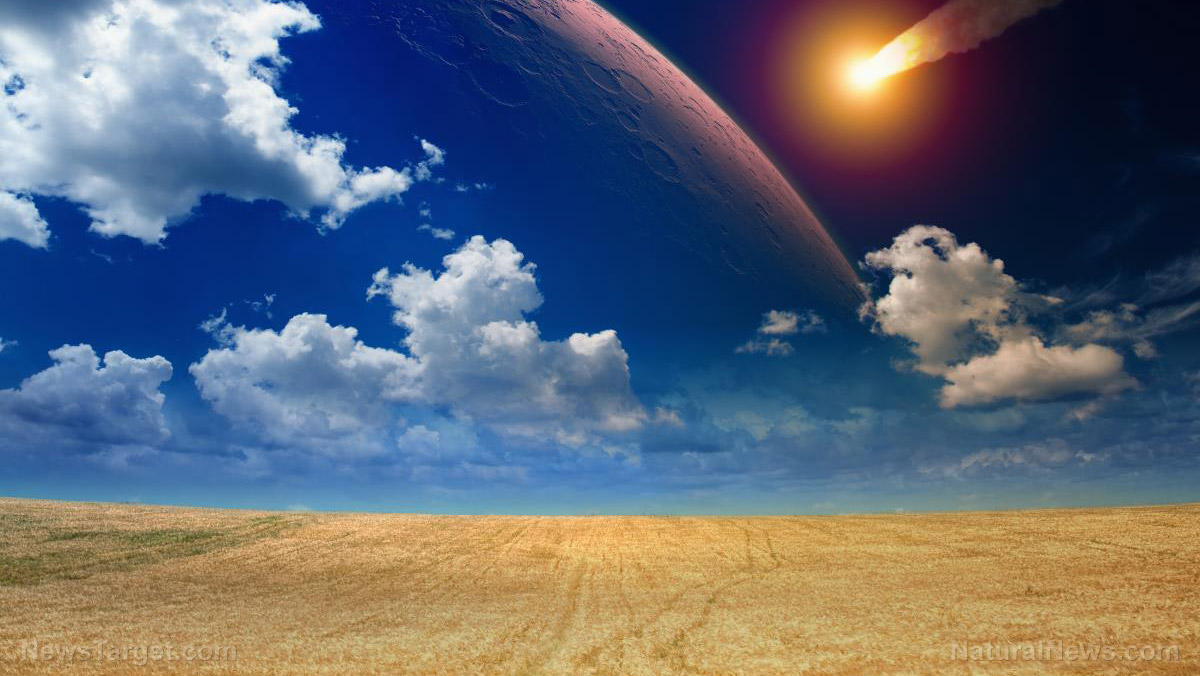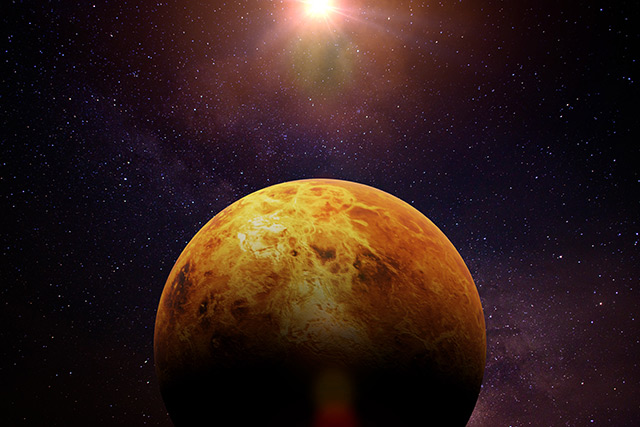A massive star went missing without leaving any trace, astronomers say
09/02/2020 / By Virgilio Marin

A massive dying star disappeared in 2019 without leaving any trace.
Clues to its sudden absence led an international team of astrophysicists to theorize that the old star may have been obscured by a giant cloud of dust. Otherwise, said the scientists, it could have turned into a black hole without going supernova – a first in the history of space research if that’s the case.
The missing star used to be located 75 million light-years away in the constellation Aquarius. It’s a luminous blue variable or LBV, a massive dying star that’s prone to fickle fluctuations in brightness. Scientists estimated that the missing LBV was brighter than the Sun by about 2.5 million times.
“We may have detected one of the most massive stars of the local universe going gently into the night,” said co-researcher Jose Groh of Trinity College Dublin.
The researchers published their findings in the Monthly Notices of the Royal Astronomical Society.
Mysterious star: Obscured or vanished
The missing star was well-studied between 2001 and 2011. In 2019, lead researcher Andrew Allan, also of Trinity College Dublin, and his colleagues were planning to study the star to learn more about its evolution. They were shocked to find the star missing from its host galaxy.
Stars bigger than the Sun usually end life via a massive supernova explosion. Such an explosion is easy to spot; they blot the sky around them with ionized gas and powerful radiation that reach light-years in every direction. The blast leaves a dense core of leftover stellar material that collapses under the weight of gravity and turns into a neutron star or a black hole.
But observations using the European Southern Observatory’s Very Large Telescope failed to detect either telltale signatures of the star or radiation imprints. The team sought to unravel this mystery by looking back into previous observations of the star from 2002 to 2009.
They discovered that the star was going through a period of strong outbursts between the observation period, unleashing great amounts of material at unusually faster rates. The outbursts were not atypical, however; the team noted that it’s normal for LBVs to experience multiple outbursts during the end-stage of stellar life. This makes them shine much brighter, as did the missing LBV prior to its disappearance.
The researchers posited that the outbursts ceased sometime after 2011. But it’s unclear what happened from that point onward. They suspected that the star dimmed considerably after the outbursts. By chance, a thick cloud of cosmic dust moved along before it, obscuring the star and further dimming its shine. In this case, they predicted that the star will likely “reappear” in the future.
On the other hand, it’s also possible that the LBV never recovered from the outbursts – it bypassed going supernova and transformed directly into a black hole.
“If true,” said Allan, “this would be the first direct detection of such a monster star ending its life in this manner.”
However, the researchers admitted that this is rare. The star would have formed a black hole that has 85 to 120 times the mass of the Sun prior to its disappearance. How this could have happened without a visible supernova is a mystery, said the authors. (Related: Supernova, resurrected: Scientists are puzzled by “the star that wouldn’t die”.)
Missing star a failed supernova
The abovementioned LBV isn’t the first star to be reported missing – in 2017, astronomers reported that the star N6946-BH1 vanished.
Telescope images showed that the star was clearly visible in 2007, brightened slightly around 2009 and completely vanished by 2015. Astronomers attempted to confirm the star’s disappearance using the Hubble Space Telescope and the Spitzer Space Telescope. They drew blanks in both cases. They hypothesized that the star might have gone through failed supernova as indicated by its minor brightening.
“N6946-BH1 is the only likely failed supernova that we found in the first seven years of our survey,” said co-author Scott Adams.
The mystery of these two vanished stars are from over. Astronomers will have to dig deeper to understand how they disappeared. For now, they remain a puzzle that will certainly boggle scientists for years and prove highly rewarding once answers come to light.
Cosmic.news has more on space mysteries.
Sources include:
Tagged Under: black hole, cool science, cosmic, Galaxies, mysterious, research, Space, supernova, Universe, weird science
RECENT NEWS & ARTICLES
Cosmic.News is a fact-based public education website published by Cosmic News Features, LLC.
All content copyright © 2018 by Cosmic News Features, LLC.
Contact Us with Tips or Corrections
All trademarks, registered trademarks and servicemarks mentioned on this site are the property of their respective owners.















